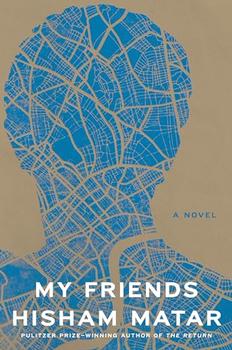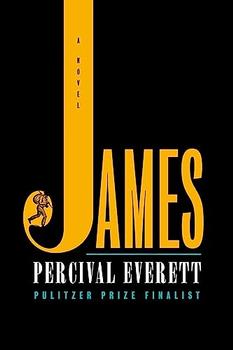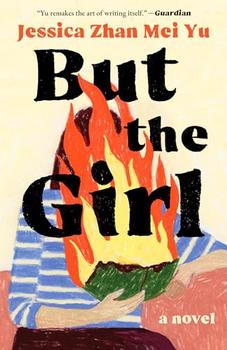Book Club Discussion Questions
Want to participate in our book club? Join BookBrowse and get free books to discuss!
Please be aware that this discussion guide will contain spoilers!
Introduction
On the morning of January 12, 1888, a snow storm of unprecedented ferocity
and suddenness swept down on the American prairie. One moment the air was clear
and mild, the next a blinding wall of ice dust engulfed the landscape in an
instantaneous white-out. Thousands were caught out on the prairie without
protection. Children on their way home from one-room prairie schools, farmers
taking care of their livestock, families doing errands in towns -- all were
overtaken by this terrible storm. But the blizzard itself was just the beginning
of their peril. In the wake of the front that propelled the storm, some of the
coldest air ever recorded spread over the region. As darkness fell, temperatures
from Montana to Kansas plunged to double digits below zero. When the sun rose on
the glittering windless morning of January 13, hundreds lay frozen to death on
the open prairie -- many of them children.
This storm, which the pioneers called "the school children's blizzard," is
the subject of David Laskin's non-fiction book. The settlers of the prairie,
many of them recent immigrants from Scandinavia, Germany and Russian, had come
to Nebraska, Iowa and Dakota Territory hoping to make new lives for their
families. Instead they encountered plagues of grasshoppers, prairie fires,
drought, terrible loneliness -- and, on January 12, 1888, a sudden wall of ice
that forever changed their lives.
The Children's Blizzard unfolds this terrible event by tracing its
impact on six pioneer families and their children. Here too is the story of the
US Army Signal Corps officer who forecast the storm, his superior officer in
Washington, DC, who headed the fledging US Weather Service, and the tangled
bureaucracy that made it so difficult to spread word of the storm to the people
of the region. Laskin also explains the meteorology behind this event -- why it
was so intense and so sudden -- and gives a vivid picture of exactly what
happens to the human body when exposed with no food or shelter to prolonged
cold.
Blending history, meteorology, human interest, and vivid details about the
settlement of the prairie,
The Children's Blizzard is a work that brings
to life both an era of American history and a single unforgettable day.
Questions for discussion
- "The blizzard literally froze a single day in time," Laskin writes in the
Prologue. "It sent a clean, fine blade through the history of the prairie."
Talk about how the blizzard epitomized prairie history, how this single event
came to symbolize the hardships and calamities of the pioneer period.
- The biggest natural disaster of recent years is Hurricane Katrina, and
there are some striking parallels between Katrina and The Children's
Blizzard. Both affected large geographical areas; both were forecast well
in advance but nonetheless caught residents unprepared; both provoked a huge
response in the media. Do you think The Children's Blizzard was the
Hurricane Katrina of its day? What, if anything, have we as a nation learned
since 1888 about how to cope with natural disaster?
- The Children's Blizzard is, at heart, the story of families --
immigrants who came to the prairie for a better life; Civil War veterans who
moved west after the war; Mennonites in search of religious freedom. How do
the stories in the book resonate to your own family stories of settlement,
immigration, hardship and survival? Were any of your ancestors affected by
natural disasters? Do you have any memoirs that relatives have written of
their early experiences in this country?
- Do you think anyone bore the responsibility for the deaths inflicted by
the storm? To what extent do you think Lieutenant Woodruff is to blame for
failing to get the word out in time? What about General Greely -- do you see
him as a narrow-minded bureaucrat or an official trying to do his job? Could
Greely or Woodruff done anything differently before or after the storm hit?
- The narrative of the book is driven by suspense and surprise: as you read,
you simply don't know whether children like Walter Allen, Lena Woebbecke, and
May Hunt's pupils will survive the night or freeze to death. Talk about how
the author sets up suspense and expectation. Do you think the style of the
book is well-suited to the subject matter?
- Laskin has said that his intent was to make the book read like a novel
while maintaining strict historical accuracy. Has he succeeded? Which
"characters" in the book did you care about most and why?
- One of the most haunting passages in the book is when Anna Kaufmann looks
at the frozen bodies of her three sons and laughs. Discuss this reaction. What
do you imagine was going through Anna's head at that moment? Have you heard of
similarly strange reactions to trauma or tragedy?
- "Exposure," the chapter about hypothermia and frostbite, is quite graphic
and medically detailed in its depiction of exactly what happens to the body as
it freezes to death. Why do you think Laskin chose to write it this way? Does
this graphic approach deepen your understanding or distance you from what the
boys were experiencing?
- Compare The Children's Blizzard to other disaster books that have
been published in recent years -- Isaac's Storm, The Johnstown Flood, The
Perfect Storm. Talk about ways in which the various books dramatize the
natural event and narrate the story of people battling the elements. Discuss
the different ways in which the authors work in history and meteorology.
- In the final pages, Laskin quotes columnist Nicholas D. Kristof's
assertion that "It's time for us to acknowledge one of America's greatest
mistakes, a 140-year scheme that has failed at a cost of trillions of dollars,
countless lives and immeasurable heartbreak: the settlement of the Great
Plains." Do you agree that this was a great mistake? Do you think the book
supports this assertion? What kind of future do you see for farmers and
families on the plains?
Unless otherwise stated, this discussion guide is reprinted with the permission of Harper Perennial.
Any page references refer to a USA edition of the book, usually the trade paperback version, and may vary in other editions.




